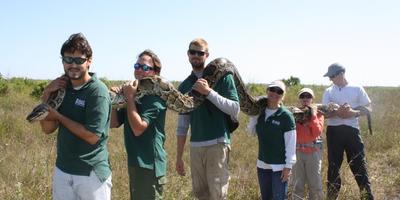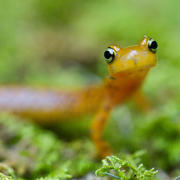Due to a lapse in appropriations, the majority of USGS websites may not be up to date and may not reflect current conditions. Websites displaying real-time data, such as Earthquake and Water and information needed for public health and safety will be updated with limited support. Additionally, USGS will not be able to respond to inquiries until appropriations are enacted. For more information, please see www.doi.gov/shutdown
Wetland and Aquatic Research Center
Home
WARC conducts relevant and objective research, develops new approaches and technologies, and disseminates scientific information needed to understand, manage, conserve, and restore wetlands and other aquatic and coastal ecosystems and their associated plant and animal communities throughout the nation and the world.
WARC Quick Links
Looking for something? Let us help.
Contact One of WARC's Scientists
Follow WARC Wetland Science on Twitter
Follow WARC Aquatic Science on Twitter
WARC ScienceNews
How Hurricanes Michael, Florence May Have Spread Nonnative Species
USGS’ preliminary storm trackers show potential for subtle damage in natural areas
A Unified Research Strategy for Disease Management
As wildlife diseases increase globally, an understanding of host-pathogen relationships can elucidate avenues for management and improve conservation efficacy. Amphibians are among the most threatened groups of wildlife, and disease is a major factor in global amphibian declines.
Large-scale Review of Amphibian Species and Community Response to Climate Change
Amphibian species and community richness has been declining in North America and climate change may play a role in these declines. Global climate change has led to a range shift of many wildlife species and thus understanding how these changes in species distribution can be used to predict amphibian community responses that may improve conservation efforts.
Publications
Hyperspectral remote sensing of wetland vegetation
Chapter 11 by Ramsey and Rangoonwala provides an overview of how hyperspectral imaging (HSI) advances the mapping of coastal wetlands that comprise a unique variety of plant species, forms, and associations. Each description begins by seeking to uncover the relationship between canopy hyperspectral reflectance and one or more of the aggregated...
Ramsey, Elijah; Rangoonwala, AminaUpdated statewide abundance estimates for the Florida manatee
Knowing how many manatees live in Florida is critical for conservation and management of this threatened species. Martin et al. (2015) flew aerial surveys in 2011–2012 and estimated abundance in those years using advanced techniques that incorporated multiple data sources. We flew additional aerial surveys in 2015–2016 to count manatees and again...
Hostetler, Jeffrey A.; Edwards, Holly H.; Martin, Julien; Schueller, PaulSympatry or syntopy? Investigating drivers of distribution and co‐occurrence for two imperiled sea turtle species in Gulf of Mexico neritic waters
Animals co‐occurring in a region (sympatry) may use the same habitat (syntopy) within that region. A central aim in ecology is determining what factors drive species distributions (i.e., abiotic conditions, dispersal limitations, and/or biotic interactions). Assessing the degree of biotic interactions can be difficult for species with wide ranges...
Hart, Kristen M.; Iverson, Autumn R.; Fujisaki, Ikuko; Lamont, Margaret M.; Bucklin, David N.; Shaver, Donna J.






